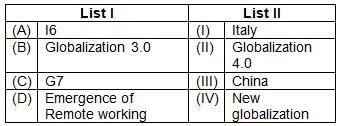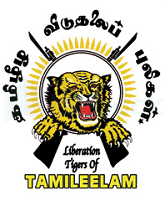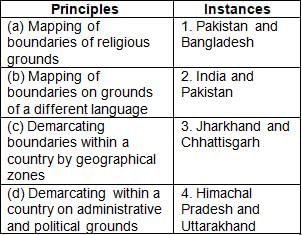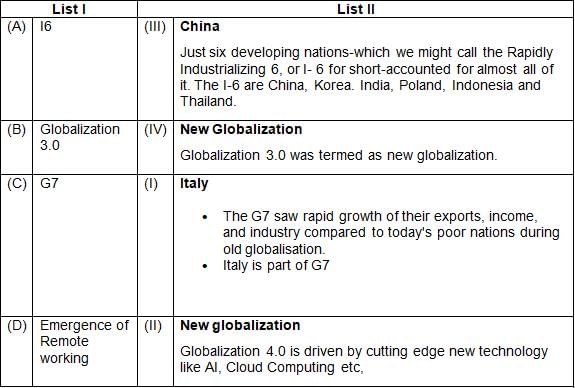Political Science: CUET Mock Test - 3 - CUET MCQ
30 Questions MCQ Test - Political Science: CUET Mock Test - 3
The Liberation Tigers of Tamil Eelam was a Tamil Militant organization that was based in _______.
Under which Article can the President of India impose an Emergency on the grounds of war, external aggression, or armed rebellion?
The Dravidian movement led to the formation of Dravidar Kazhagam (DK) under the leadership of which social reformer?
Consider the following statements with respect to SAFTA :
- The South Asian Free Trade Area was signed in 2006.
- It allows the least developing countries (LDC) 5 years to reduce their tariffs.
Which of the following statements is/are correct?
With reference to the World Trade Organisation (WTO), consider the following statements:
- It is the specialized agency of the United Nations (UN) that came into existence in 1995.
- WTO is the only international organisation dealing with the global rules of trade between nations.
- The topmost decision-making body of the WTO is the Ministerial Conference, which usually meets every two years.
Which of the statements given above is/are correct?
Match the following pairs and select the correct answer:

Given below are two statements :
Statement (I): Authoritarianism demands unquestioning obedience to authority.
Statement (II): Authoritarian governments often lack free and competitive election of leaders.
In the light of the above statements, choose the correct answer from the options given below:
Why authoritarian regimes command unreasoned acceptance of their political authority?
Authoritarian regimes legitimise their dictatorship through which of the below methods?
A. Through periodic fair elections.
B. Through competitive election of leaders.
C. Through deceptive and uncompetitive elections.
D. Through blocking opportunities to potential challenges
Choose the most appropriate answer from the options given below:
What remains the status of civil liberties in authoritarian regimes?
The term 'Telemigrants' is related to globalisation
Given below are two statements:
Statement I: Globalization 2.0 began after World War-I and ended around 1950
Statement II: Globalization 2.0 benefited today’s rich nations like the G7,
In the light of the above statements, choose the correct answer from the options given below:
The annual meeting 2019 of World Economic Forum was held in which of the following countries
The term Great Divergence is related to
(A) Globalization 1.0
(B) Globalization 2.0
(C) Globalization 3.0
(D) Globalization 4.0
Choose the correct answer from the options given below:
Mateh List I with List II:

Choose the correct answer from the options given below:
Congress was defeated in the lok sabha elections of
The chairman of drafting committee of the Constituent Assembly was
The Congress Socialist party was founded by
The Indian leader who gave the slogan “Garibi hatao” was
Directions: In the following questions, a statement of Assertion (A) is followed by a statement of Reason (R). Mark the correct choice as:
Assertion: It was not just the size of the country and the electorate that made this election unusual. The first general election was also the first big test of democracy in a poor and illiterate country.
Reason: At that time there were 17 crores eligible voters, who had to elect about 3,200 MLAs and 489 Members of Lok Sabha. Yet, the elections were conducted successfully.
Directions: In the following questions, a statement of Assertion (A) is followed by a statement of Reason (R). Mark the correct choice as:
Assertion: The roots of the extraordinary success of the Congress party go back to the legacy of the freedom struggle.
Reason: This was similar to the dominance the African National Congress has enjoyed in South Africa after the end of apartheid.
Progress that meets the needs of the present without compromising the ability of future generations to meet their own needs is:
According to the Kyoto Protocol, the major nations abided to reduce the concentration of greenhouse gases by.


















